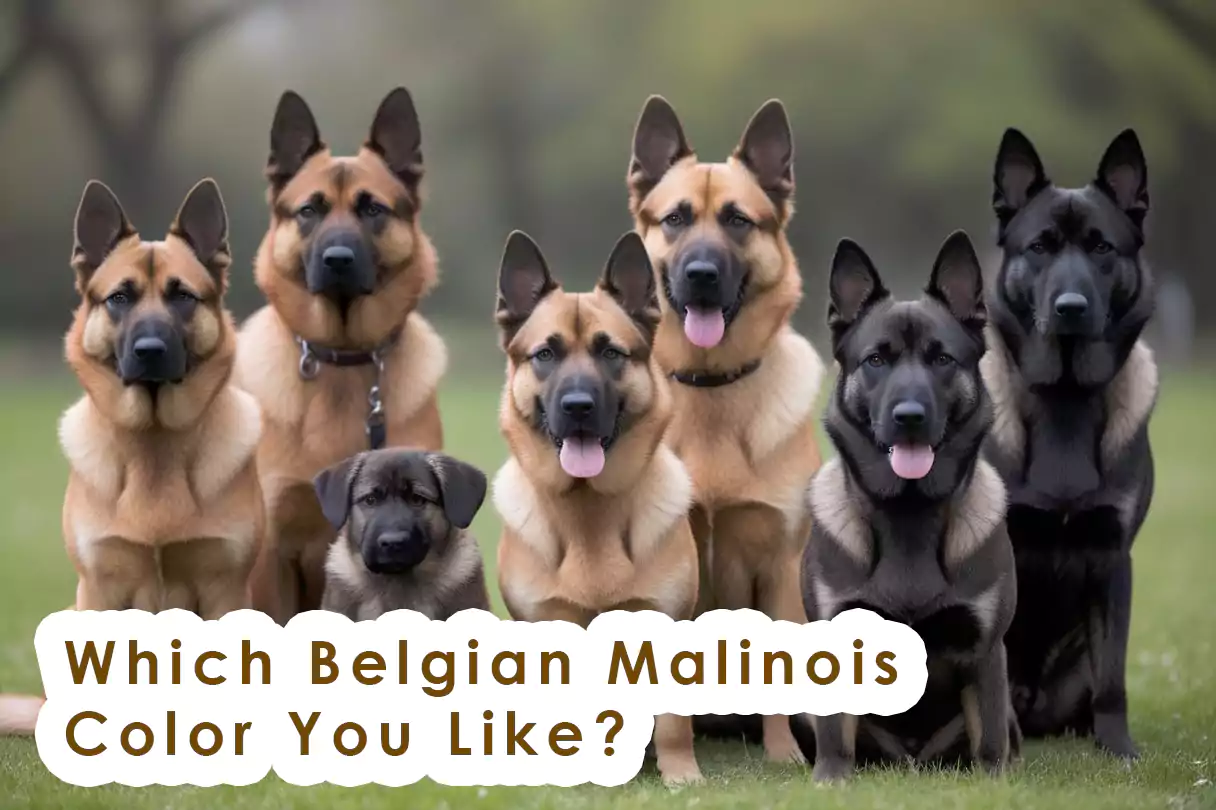Belgian Malinois Colors Explained: Understanding Their Unique Coat Variations

Belgian Malinois come in a variety of colors, with some being standard and others less common. The most recognized colors include fawn, mahogany, red, brindle, and black, each showing different patterns and intensity. These colors can affect the dog’s appearance but do not change its behavior or abilities.

Many kennel clubs recognize two standard colors, while others allow several non-standard shades. The differences in color come from genetics, and some coats may change slightly as the dog grows. Knowing these colors helps potential owners choose a Belgian Malinois that fits their preferences.
Recognized Belgian Malinois Coat Colors

Belgian Malinois come in several distinct coat colors. These colors vary in shades and patterns but share common traits like a black mask and ears. Each color offers a unique look while fitting the breed standard.
Fawn
Fawn is the most common coat color for Belgian Malinois. It ranges from light beige to a darker café latte shade. This color is usually solid but may have faint sable shading, giving the coat some depth.
The fawn coat is paired with black ears and a black mask that highlights the facial features. This contrast makes the eyes stand out, often described as dark chocolate in color. The coat is short and dense, providing protection without excess bulk.
Fawn Malinois are well-recognized in many dog shows and working lines. Their straightforward coloring helps them blend into natural environments, which is useful in police and military work.
Mahogany
Mahogany Belgian Malinois have a deeper, richer base color compared to fawn. This shade is reddish-brown and often looks warm and vibrant. The color may appear almost chestnut or bronze under certain lighting.
Like other coat colors, mahogany Malinois have black ears and a black mask. This strong contrast sharpens their expressions and adds definition to their face. The mahogany color also sometimes shows sable patterning over the body.
This coat color is desirable for those seeking a Malinois with a bold, striking appearance without moving away from the breed standard. The coat texture remains short and dense in mahogany dogs.
Red
The red Belgian Malinois coat is a brighter, more intense shade of brown than mahogany. It leans toward a reddish tone with less brown and more warmth. This color is less common but still recognized by major kennel clubs.
Red Malinois also have the typical black ears and mask that frame the face. In some cases, the red coat can have subtle sable markings that add texture and variation across the body.
This color is often chosen for its bold look and strong visual impact. The red coat is practical as well because it provides effective camouflage in certain outdoor environments.
Gray
Gray Belgian Malinois are rare and less commonly seen in the breed. This coat color has a cooler tone, ranging from light silver-gray to darker charcoal. Unlike the warmer tones of fawn or red, gray gives the dog a unique appearance.
The gray coat is usually solid but may carry some sable-like patterning. As with all recognized Malinois colors, black ears and a mask are present. The eyes are dark and stand out well against the lighter coat.
Gray Malinois are uncommon in working or show lines but attract attention for their distinct and appealing look. The short, dense coat maintains the breed’s characteristic appearance regardless of the unusual color.
Coat Markings and Patterns

Belgian Malinois have distinct coat markings that affect their appearance. These markings often include areas of darker pigment on specific parts of the body. They help define the breed’s look and can vary between individual dogs.
Black Mask
The black mask is a defining feature on many Belgian Malinois. It covers the muzzle and sometimes extends to the area around the eyes. This dark shading contrasts with the lighter body color.
The mask is caused by concentrated black pigment. It does not change much as the dog ages. A clear, well-defined black mask is often seen as a desirable trait in the breed.
This marking helps give the dog a focused facial expression. Some Malinois have a more subtle mask that blends into the surrounding coat.
Black Overlay
Black overlay refers to darker hairs spread over lighter base coat colors. It creates a shaded or “ticked” look across the body and back. The black hairs are shorter and mixed with the primary color.
This pattern is common in Belgian Malinois. It adds depth and texture to their coat. The extent of the black overlay varies between individual dogs, making some look darker overall.
The overlay does not cover the entire body but appears in patches or gradients. It plays a role in the breed standard for coat appearance.
Sable Pattern
The sable pattern features individual hairs striped with alternating light and dark bands. This gives the coat a rich mix of colors that changes slightly with movement or light.
Sable can appear in many shades, often including fawn, red, or mahogany base colors. The black on each hair tip adds a speckled or blended effect.
This pattern is genetic and common in Belgian Malinois. It provides a natural camouflage look and distinguishes the breed from similar types.
| Feature | Description |
|---|---|
| Black Mask | Dark muzzle and eye area pigmentation |
| Black Overlay | Dark hairs over lighter base, creating shaded patches |
| Sable Pattern | Individual hairs with light and dark bands, mixed colors |
Color Genetics in Belgian Malinois

The coat color of the Belgian Malinois is shaped by specific genes that control the base color and pattern. Understanding these genetics helps explain why certain colors appear more often and why some are rare. These factors influence visible traits such as coat shade and the black mask.
Influence of Genetics on Color
The main gene affecting color in Belgian Malinois is the Ay allele, which controls their typical fawn to red coat shades. This gene is often called “sable” by geneticists and creates the range of colors from pale fawn to darker red.
Another key gene affects the black base color, controlled by the B locus. Dogs with the dominant B gene have a black base, which can appear as a black mask or darker areas on the coat. The combination of these genes and others determines the exact color pattern seen in the dog.
Hereditary Factors
Coat color is inherited from both parents, passed through dominant and recessive genes. The B locus gene is dominant for black pigment, meaning just one copy can show a black base color.
The sable coloring is also genetic but can vary depending on how the Ay gene interacts with other color genes. These hereditary factors explain why most Malinois share similar colors like fawn and red sable, while some coat shades are less common.
Breeding pairs with different genes for color may produce puppies with a mix of the standard colors recognized by the American Kennel Club.
Impacts of Coat Color on Health and Care

Coat color in Belgian Malinois mostly does not affect their behavior or general health. However, some rare colors can bring specific risks. The way owners care for different colors can also vary to keep the coat looking healthy.
Myths About Health and Color
Many people think coat color changes a dog’s temperament or longevity, but this is false for Belgian Malinois. Their loyalty, intelligence, and energy stay the same regardless of color.
Health issues do appear more with rare colors like merle or white, which can cause vision and hearing problems. Standard colors such as fawn, sable, or red do not carry these risks.
Owners should avoid breeding dogs with rare coat colors linked to genetic problems. This helps lower the chance of health defects in puppies.
Color Maintenance
Maintaining a Belgian Malinois’s coat mostly depends on its standard types, which are easy to care for. Regular brushing removes loose fur, helps skin breathe, and keeps the coat shiny.
Rare colors with lighter shades may show dirt more clearly. These dogs might need more frequent baths but not too often, as it can dry their skin.
Sun exposure can fade some colors, especially lighter or diluted coats like blue or cream. Using shade or protection can help keep the coat vibrant over time.

Frequently Asked Questions
Belgian Malinois come in a range of colors with specific traits and patterns. Some colors are recognized as standard by kennel clubs, while others are less common or linked to unique genetic traits.
